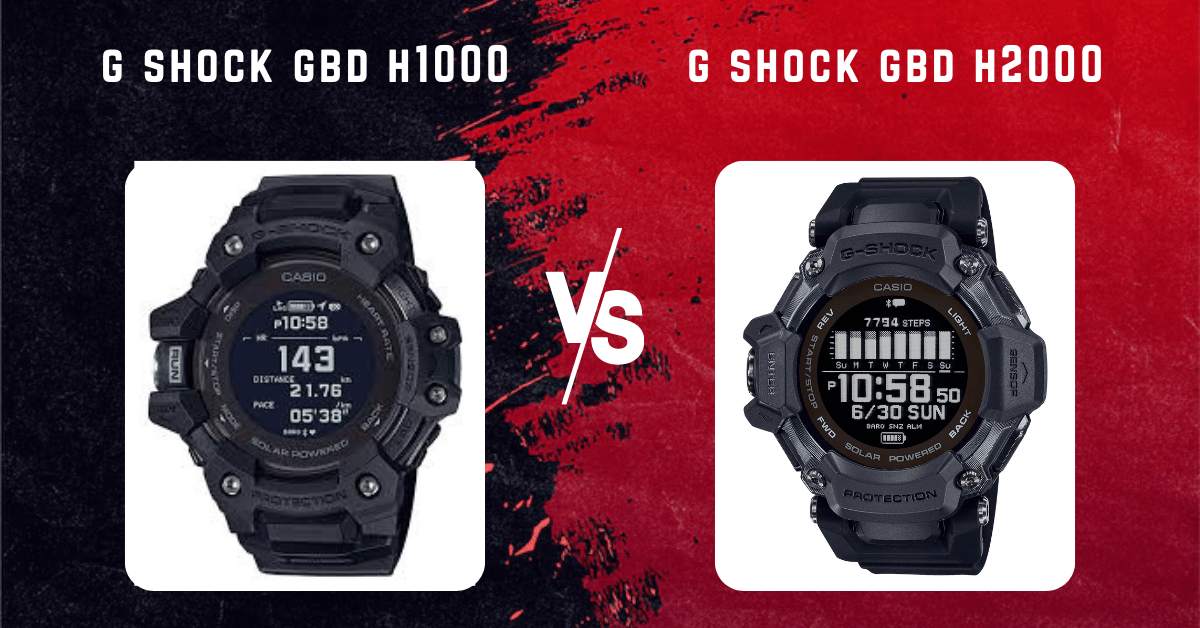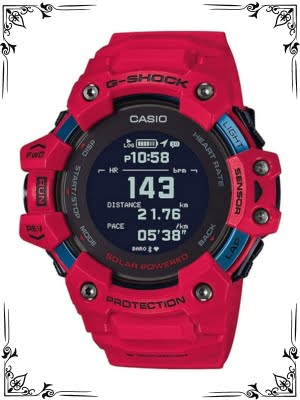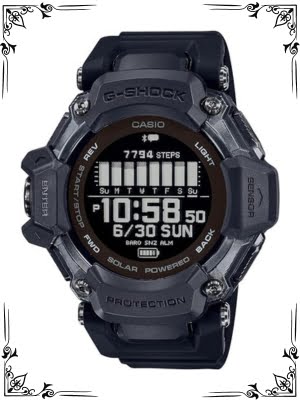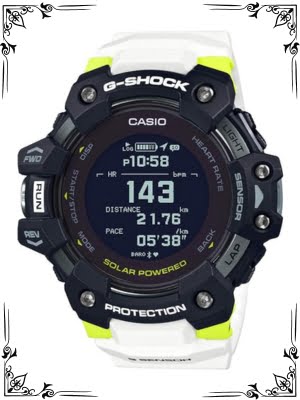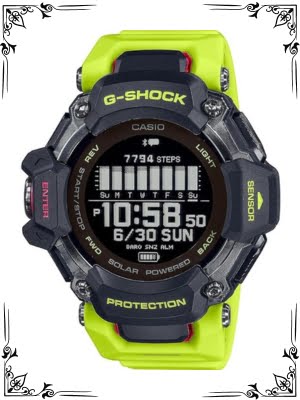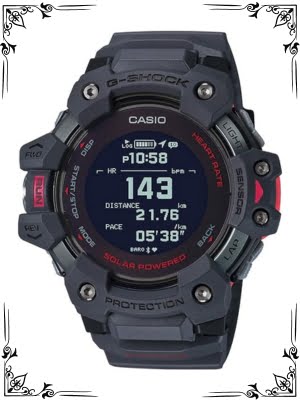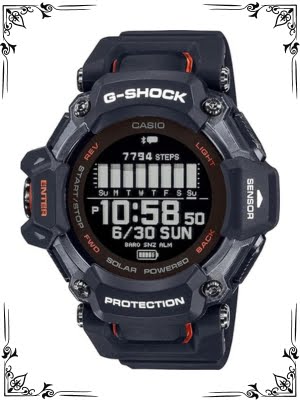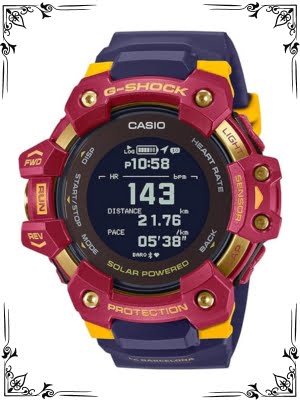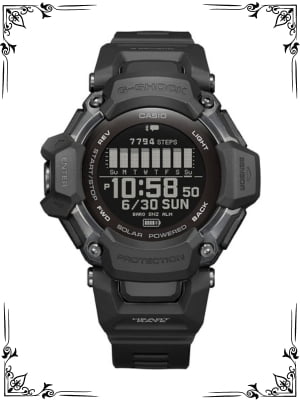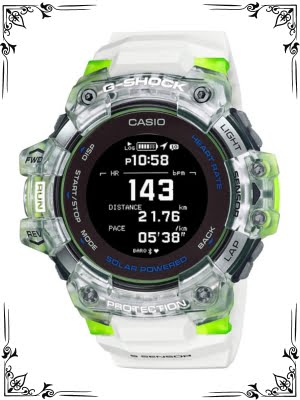The primary difference between the GBD-H1000 and GBD-H2000 lies in their approach to connectivity and power management. The GBD-H1000 boasts Bluetooth connectivity for seamless smartphone integration and data transfer, while the GBD-H2000 prioritizes extended battery life with a focus on standalone operation. Let’s delve deeper into what this means for your next adventure.
Introduction
But with seemingly similar names, you might wonder: what truly differentiates these two titans? Fear not, intrepid explorer! This comprehensive guide will dissect their technical specifications, design elements, and user experiences, helping you choose the G-Shock Rangeman that perfectly complements your thirst for adventure.
The G-Shock Rangeman series has carved a niche for itself as the go-to timepiece for outdoor adventurers and extreme sports enthusiasts. Now, the GBD-H1000 and the GBD-H2000 stand as the latest contenders, promising cutting-edge functionalities within a G-Shock’s legendary durability.
A Blast from the Past: A Look at the Rangeman Legacy
Before exploring the specifics, let’s revisit the shared heritage. The Rangeman series emerged in 2013, specifically designed for the demands of outdoor enthusiasts. These watches boast advanced features like GPS tracking, barometer readings, and shock resistance, making them ideal companions for challenging terrains.
Both the GBD-H1000 and GBD-H2000 carry this legacy forward, offering cutting-edge functionalities housed within a G-Shock’s legendary toughness.
Technical Breakdown: Unveiling the Inner Workings
Let’s take a closer look at the technical specifications of each watch, highlighting the key differences in a table:
| Feature | GBD-H1000 | GBD-H2000 |
|---|---|---|
| Movement | Quartz (battery-powered) | Quartz (battery-powered) |
| Battery Life | Up to 14 months (standard mode) | Up to 3 years (with power saving mode) |
| Timekeeping | Digital and analog hands | Digital and analog hands |
| World Time | Yes | Yes |
| Stopwatch | Yes (up to 100 hours) | Yes (up to 100 hours) |
| Countdown Timer | Yes (up to 24 hours) | Yes (up to 24 hours) |
| Alarm | Yes (with snooze) | Yes (with snooze) |
| Illumination | LED backlight | LED backlight |
| Water Resistance | 200 meters (20 bar) | 200 meters (20 bar) |
| Bluetooth Connectivity | Yes | No |
| Mobile App Integration | Yes (via the G-Shock Connected app) | No |
| GPS Tracking | Yes | Yes |
| Barometer, Altimeter, Compass | Yes | Yes |
| Step Counter | Yes | Yes |
| Distance Tracking | Yes (GPS) | Yes (GPS) |
| Calories Burned | Yes (estimated) | Yes (estimated) |
| Training Modes | Running, Cycling, Fishing, etc. | Running, Cycling, Fishing, etc. |
| Auto Lap | Yes | Yes |
| Manual Lap Memory | Up to 100 laps | Up to 100 laps |
| Training Log | Yes (detailed data via app) | Internal memory (no app integration) |
As you can see, the core functionalities like GPS tracking, environmental sensors, and training modes are nearly identical. The significant difference lies in Bluetooth connectivity and app integration.
Understanding the Connectivity Divide:
GBD-H1000: This model embraces Bluetooth connectivity, allowing you to sync data with the G-Shock Connected app. The app offers features like route tracking, training analysis, and customizable watch settings. This connectivity comes at the expense of a slightly shorter battery life compared to the GBD-H2000.
GBD-H2000: This model prioritizes extended battery life by omitting Bluetooth connectivity. While it lacks app integration, the GBD-H2000 boasts an impressive battery life of up to 3 years with power-saving mode engaged.
This makes it ideal for long expeditions where frequent charging might not be an option. However, data analysis and customization options are limited to the watch’s internal memory and menus.
So, the choice between these two models boils down to your preference:
Do you prioritize smartphone integration and detailed training data analysis? Choose the GBD-H1000 for its Bluetooth connectivity and app compatibility.
Do you value extended battery life for remote adventures, even if it means sacrificing app integration? Then the GBD-H2000 might be your perfect companion.
Design and Aesthetics: Built for the Elements
Both watches embrace the G-Shock design philosophy, prioritizing functionality and durability, but with subtle aesthetic differences:
Dial Design:
GBD-H1000 & GBD-H2000: Both models share a similar digital display with a negative format (dark digits on a light background) and small analog hands for timekeeping. Additional sub-dials display various functionalities like GPS data, sensor readings, or training information.
Case and Bracelet:
GBD-H1000 & GBD-H2000: The GBD-H1000 and GBD-H2000 utilize shock-resistant resin cases with a slightly bulky profile, ensuring they can withstand the rigors of outdoor pursuits. The resin straps feature a textured wave pattern for improved grip and sweat management.
Both models come in a variety of color options, allowing you to choose one that complements your style.
Brand Image:
Both watches embody the core G-Shock values of toughness and functionality, making them ideal companions for outdoor adventures. However, the lack of Bluetooth connectivity in the GBD-H2000 might give it a slightly more “old-school” feel for those who value a more self-contained experience.
User Feedback: What the Explorers Say
GBD-H1000:
- Users appreciate the convenience of Bluetooth connectivity and the detailed training data offered by the app.
- The built-in GPS tracking is praised for its accuracy, especially during hikes and trail runs.
- Some users report occasional Bluetooth connectivity hiccups, although these can often be resolved with app updates or phone reboots.
GBD-H2000:
- Users value the extended battery life, especially for longer expeditions where frequent charging is impractical.
- The watch’s durability and resistance to harsh elements are highly praised by outdoor enthusiasts.
- A few users find the lack of app integration inconvenient for data analysis, although the watch’s internal memory can store a significant amount of training data.
Common Problems: Potential Pitfalls to Consider
While both G-Shock Rangeman models are renowned for their durability, a few minor issues have been reported:
Negative Display: The negative display might be harder to read in low-light conditions compared to some G-Shock models with positive displays.
Bulkier Profile: Both watches have a slightly bulky profile, which some users might find less comfortable for everyday wear compared to slimmer G-Shock models.
Limited Customization (GBD-H2000): The lack of app integration in the GBD-H2000 can limit customization options for some users who prefer extensive watch face and training data personalization.
The Final Lap: Choosing Your Champion
Now that you’ve delved into the technical specs, design elements, and user experiences of the GBD-H1000 and GBD-H2000, it’s time to pick your champion – the G-Shock Rangeman that perfectly complements your unique exploration style. Here’s a breakdown to help you make an informed decision:
Matching Your Watch to Your Adventure Style:
The Data-Driven Adventurer: Are you a frequent explorer who cherishes detailed post-adventure analysis? Do you regularly embark on hikes, bike rides, or runs, and crave a comprehensive breakdown of your performance metrics? If so, the GBD-H1000 is your ideal partner.
Its Bluetooth connectivity seamlessly syncs data with the G-Shock Connected app, offering in-depth analysis of your workouts. You’ll have access to features like route tracking, training analysis, and customizable watch settings, allowing you to constantly refine your approach and optimize your performance.
The Long-Distance Adventurer: Perhaps you’re a seasoned explorer who embarks on long-distance expeditions, venturing deep into remote locations. In these scenarios, battery life becomes paramount. The GBD-H2000 reigns supreme in this category, boasting an impressive 3-year battery life (with power saving mode engaged).
This ensures your watch remains a reliable timekeeping companion throughout your extended journeys, without the worry of frequent charging interrupting your exploration. While the GBD-H2000 prioritizes standalone functionality, it doesn’t compromise on core functionalities.
You’ll still have access to GPS tracking, environmental sensors (barometer, altimeter, compass), and training modes to guide you through challenging terrains and track your progress.
Beyond Specs: Personal Preferences:
Technical specifications are crucial, but your personal preferences also play a role. Here’s a quick recap to solidify your decision:
Do you crave detailed data analysis and the convenience of app integration? Choose the GBD-H1000 for a feature-rich, smartphone-connected experience.
Do you prioritize an extended battery life for self-contained adventures, even if it means sacrificing app integration? Then the GBD-H2000 might be your ideal choice, offering reliable timekeeping and core functionalities for long expeditions.
A Final Note: There’s No Wrong Choice – Just the Right Champion for You!
This guide has equipped you with the knowledge to make an informed decision. Both the GBD-H1000 and GBD-H2000 are exceptional G-Shock Rangeman watches, upholding the brand’s legacy of toughness and functionality.
Ultimately, the best choice depends on your individual needs and preferences. Consider your typical adventure style, battery life requirements, and how much weight you place on app integration for data analysis.
So, gear up with the G-Shock Rangeman that best suits your exploration style. Confidently conquer any challenge that comes your way, with a timepiece that can withstand the elements and become a trusted companion on your expeditions. Remember, the perfect G-Shock Rangeman awaits – choose wisely and embark on your next adventure with a champion on your wrist!
Conclusion
The GBD-H1000 and GBD-H2000 represent two distinct approaches to the G-Shock Rangeman legacy. The GBD-H1000 excels for data-driven adventurers with its Bluetooth connectivity and app integration, while the GBD-H2000 reigns supreme for long-distance explorers who prioritize extended battery life without sacrificing core functionalities.
By understanding their strengths and weaknesses, you can confidently choose the G-Shock Rangeman that aligns perfectly with your thirst for adventure. So, gear up, explore new horizons, and conquer any challenge that comes your way, with a G-Shock Rangeman as your trusted timekeeping companion.
FAQs
1. Are these watches waterproof?
Yes, both the GBD-H1000 and GBD-H2000 boast 200-meter water resistance, making them suitable for swimming, snorkeling, and other water activities.
2. Which watch is more accurate for tracking workouts?
Both models offer similar accuracy for built-in functionalities. The data analysis capabilities of the GBD-H1000 through the app might be advantageous for some users.
3. Can I replace the battery in these watches?
Yes, both the GBD-H1000 and GBD-H2000 use a standard CR1220 battery that can be replaced by a watchmaker or with some DIY know-how. The typical battery life estimates (14 months for GBD-H1000 and 3 years for GBD-H2000) mean replacements shouldn’t be frequent.
4. Do these watches offer heart rate tracking?
Neither the GBD-H1000 nor the GBD-H2000 has built-in heart rate monitoring. However, both are compatible with external heart rate sensors that can be paired via Bluetooth (for GBD-H1000 only).
5. Are there any other G-Shock outdoor watches I should consider?
G-Shock offers a variety of outdoor watches. For instance, the G-Shock GWG-1000 offers enhanced shock resistance and mud resistance for extreme environments. Ultimately, the best G-Shock for you depends on your specific needs, budget, and preferred functionalities.

